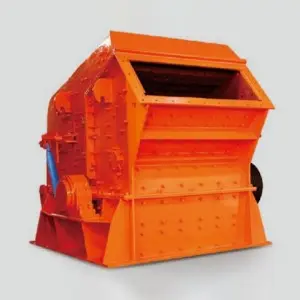During the continuous operation of the crushing equipment, the motor, like the heart, provides power for the entire system. However, when encountering abnormal working conditions, the motor may face the risk of overload. The motor overload protection system of the impact crusher is like a meticulous guardian, constantly monitoring the operating status of the motor to ensure that the power source always jumps safely and stably.
The core of overload protection lies in real-time monitoring and intelligent response. The system can keenly detect abnormal conditions by continuously monitoring the operating parameters of the motor. When the motor load gradually increases and approaches the critical point, the protection system will activate the early warning mechanism to remind the operator to pay attention to the equipment status. This kind of early warning is like a gentle reminder, giving users the opportunity to take corresponding measures before the problem becomes serious.
If the load continues to increase, the system will enter the second stage of protection. At this point, the protection device will automatically adjust the operating parameters of the equipment, attempting to reduce the load on the motor by lowering the feed rate or adjusting the working mode. This automatic adjustment function is like an experienced operator, capable of making the most appropriate adjustments based on the actual situation, protecting the equipment without affecting normal production.
When encountering sudden overload, the protection system will activate an emergency response. The system can identify abnormal states in an extremely short time and immediately take protective actions. This rapid response capability is of vital importance. It can cut off the power transmission in time before the motor is damaged, thus avoiding more serious equipment damage. The entire process is fast and accurate, minimizing equipment downtime to the greatest extent.
The debugging process emphasizes personalized adaptation. The installation environment and working conditions of each piece of equipment are not the same, so the protection system needs to be precisely adjusted according to specific circumstances. Debuggers will simulate various working scenarios to test the response speed and accuracy of the system, ensuring that the protection threshold Settings are neither too sensitive to cause frequent shutdowns nor too sluggish to lose their protective significance.
The art of balancing system sensitivity deserves attention. An overly sensitive protection system may frequently activate due to minor fluctuations, affecting normal operation. And a system that responds slowly may not be able to provide effective protection. The debugging process is about finding this optimal balance point, enabling the system to promptly identify real dangers without overreacting to minor fluctuations in normal operation.
The multi-level protection strategy demonstrates the system’s wisdom. Modern overload protection usually adopts a hierarchical protection approach, taking corresponding measures based on different severity levels. A slight overload may only trigger a warning, a moderate overload will activate automatic adjustment, and a severe overload will immediately shut down the machine. This hierarchical processing approach not only ensures the safety of the equipment but also maintains production continuity as much as possible.
Self-diagnosis function enhances the reliability of the system. The advanced protection system can conduct regular self-checks to ensure that all sensors and protection components are functioning properly. This self-checking function is like a regular health checkup, which can detect potential problems in advance and prevent the protection system itself from malfunctioning and failing.
The maintenance reminder function reflects a humanized design. The system will record the occurrence and handling process of each overload event. These data not only help analyze the operating status of the equipment but also promptly remind users when maintenance is needed. This considerate design makes equipment maintenance more planned and avoids production disruptions caused by sudden malfunctions.
After the debugging is completed, the protection system is like an indefatigable guardian, silently safeguarding the safe operation of the motor. It will not interfere with the normal operation of the equipment, but it always shows up in time when needed and defuses risks in the most appropriate way. This intelligent protection enables operators to focus more on production itself without constantly worrying about equipment safety issues.
The value of the motor overload protection system lies not only in preventing equipment damage, but also in ensuring the stability and continuity of the production process. It guards the power core of the equipment in an intelligent way, enabling the crushing operation to achieve maximum efficiency under the premise of safety. In this era that emphasizes efficiency and safety, such protection systems have become indispensable intelligent partners for modern crushing equipment.

Post time: Sep-18-2025
